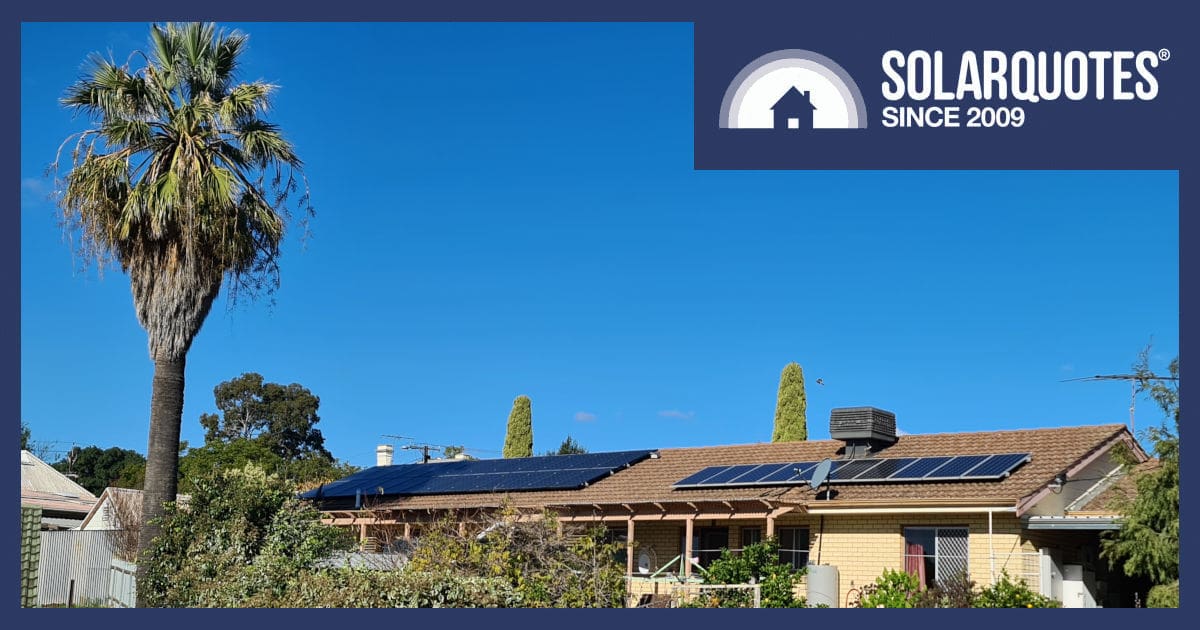
As we get deeper into autumn, the days are growing short and the shadows are growing longer — which is bad news for your solar if a massive palm tree happens to be positioned in the wrong spot. Here’s how an array set up in one season can be set up to fail for another.
The tricky thing about shade is that it is never where you left it: from hour to hour it is on the move, and from season to season too. For solar this is a huge headache: you can design a system to accommodate a system designed to account for summer shade conditions, only for all that to go out the window in autumn.
This happened to a relative of mine who had a 10.85kW solar array set up on their 2 bedroom unit by a dodgy installer who didn’t know what he was doing: the installer being me.
I had raced to get the system installed by December 31, with three neat rows of panels were laid down nice and square, so I could click the MC4 connections together, commission the system, and claim the STC money before the rebate dropped as it does at the end of every year.
With 24 panels facing North and another row of 11 facing South, the system performed well initially in those long summer days, making plenty of kilowatt hours, but a dark shadow was about to be cast upon my work.
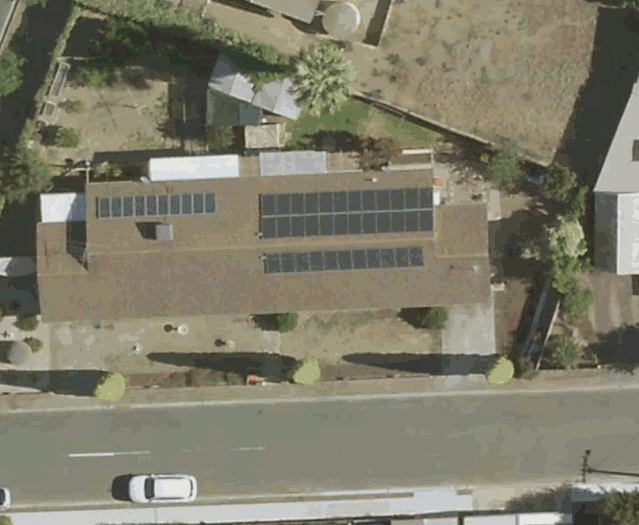
Finally, good-for-nothing pencil pines prove useful as a pointer.
Palm No Sun Day
The problem with this place was a massive palm tree that intruded on the fence line. It put some shade across the lawn in high summer, but in high winds it clattered and dropped dead fronds.
What was more irksome was the huge swathe of shade it painted across the house as the days shortened and precious sun hours became scarcer.
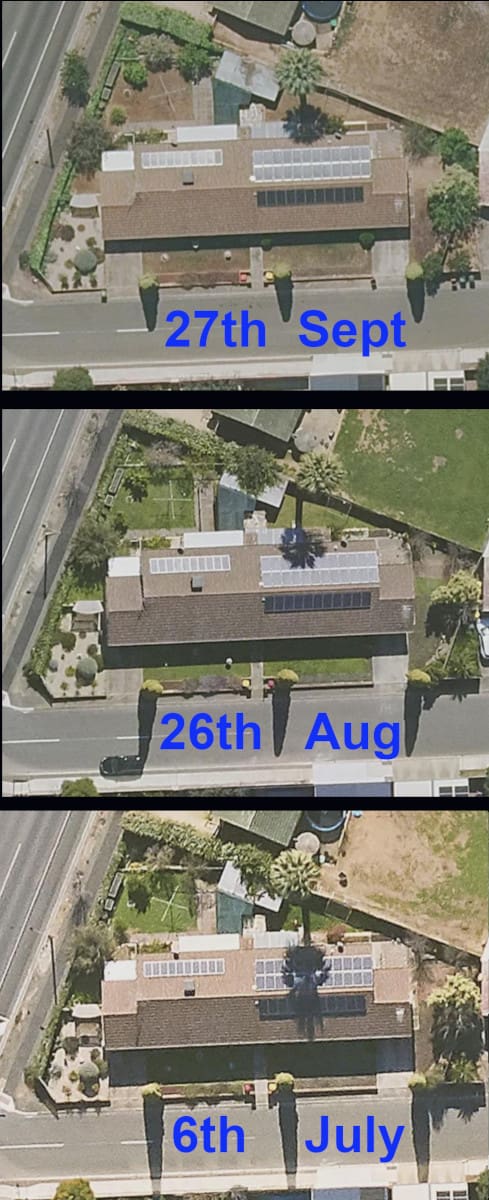
Shadows stretch through the year, so it’s not always apparent where they land when you’re on the roof to measure up.
Shade Is A Solar Killer
As autumn encroached it was soon apparent the entire northern array was being hobbled because I’d simply wired it as two horizontal rows.
As the morning shade killed off the most western panel, the whole string was affected. It got worse as the shadow swept across more panels, so a solar salesman might have tried to ameliorate the issue with optimisers or micro inverters.
The shame of it was we soon lost a good deal from both top and bottom rows.
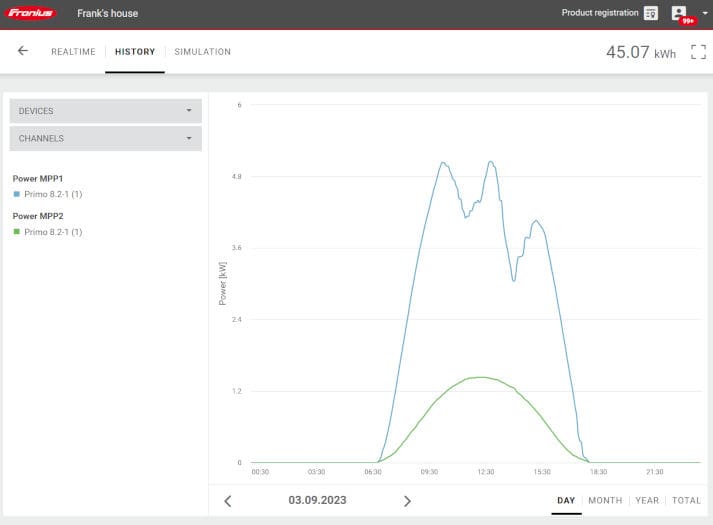
Production ramps up until the shade hits, peaks again at midday when both array are “equally” shaded & then peaks once more as the shade clears the array
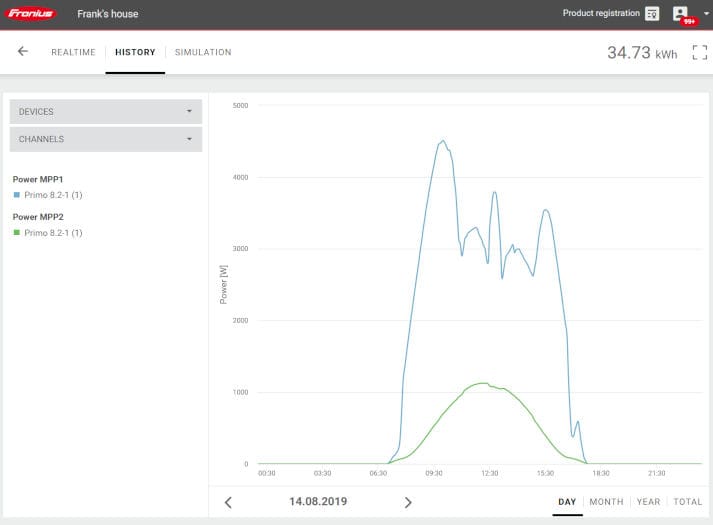
As more of the array becomes more shaded deeper into winter, the MPPT algorithm finds more work to do and the shade even reaches the southern array. (green trace)
Wired For Success
The solution to help maintain output was to rearrange the array wiring.
By adding a couple of extra cables I split the array 12 left and 12 right, instead of straight top and bottom rows. Although the shade remained, at least one of the parallel strings would be kept in the sun to perform at its best.
This also meant the MPPT algorithm would maintain higher output as it constantly scans for the best combination of current and voltage from the fully exposed panels, while the shaded array would just contribute what it could.
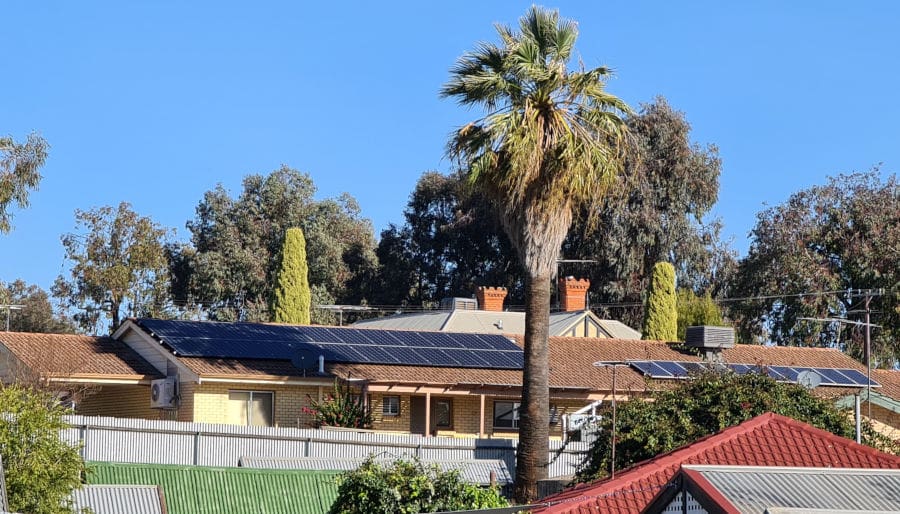
The array might have dwarfed the adjoining neighbours, but the mid-afternoon shade still kills it.
Know Where The Shadows Fall
While shade can’t be avoided sometimes, a few customers I’ve met view the trees responsible as vertically stacked firewood. Solar becomes the reason for a chainsaw massacre.
If I were to do this job again today, it would have a 10kW inverter and more solar on the south side to reach 13kW in total, or possibly 20kW of solar with a battery and a new roof over the patio.
When you’re looking to get solar power it’s worth getting it right from the outset and this might mean you have to give your sales or install team some local knowledge. It pays to have some idea about where the shadows fall on your roof.
An additional factor is whether any trees are deciduous: solar installed in the middle of winter when the local trees are free of leaves could be compromised unwelcome summer shade once the green canopy grows back.
Ask For A Solar Shade Assessment
Want to know how much your solar would be affected by local trees? Ask your installer for a shade assessment.
Your installer will have used a Suneye or Solar Pathfinder device when they gained their solar accreditation, however it’s likely the only time.
With advances in digital tools, most quoting platforms offer virtual shade analysis using aerial images. It’s not quite as accurate but much faster and cheaper, much like solar itself.
Another option is incorporating panel-level optimisation into your solar: smart electronics that optimise the power of each panel in a string independently. Read more on this here.

 RSS - Posts
RSS - Posts


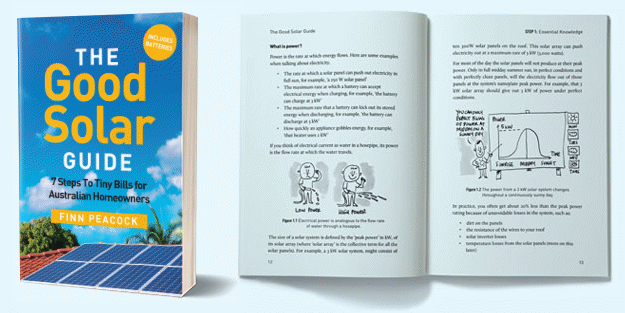
…or use microinverters.
Years ago, I had a SolarEdge system installed. The optimiser works well, but I would not use SolarEdge again for personal reasons.
Hi Doug,
Micros and optimisers certainly are an option.
We’re finding it’s interesting how personal preference affects technology choice.
While customers often ask for quotes on specific brands, latest model hardware or maybe Australian content, we’ve noticed a trend recently.
There’s a number of punters who, to coin a phrase, can’t stand the smell of Musk, hence Tesla are off the list.
Others can’t abide products out of Israel, so Solar Edge is equally as odious.
I wonder if Enphase will suffer from association with the US. They make nice products with great support but sadly their battery offering isn’t technically competitive without doubling the kWh capacity, especially for it’s current price.
My parents live on a property and would love to go with ground-based panels, to avoid shade issues and also because they have oodles of land, and would rather avoid fiddling with the roof if they can avoid it. They’ve found it extremely difficult to find installers who will do ground-based panels, is that just because it’s much less common, or are there specific technical challenges with doing that?
Hi Nick,
Ground mount solar is fairly common for remote area power so you need to hunt out an installer who specialises in proper off grid installation.
Alternatively you could engage a fencing contractor to plant a couple rows of fence posts. Given a drawing for the right size & spacings, conventional solar racking can be used.
The only complexity is getting DC solar cable that’s rated for underground service.
Thanks Anthony. Would these installers be on your books, if they were to do the regular submission for 3 quotes? I can’t remember if ground mount is one of the options available when filling out the SQ enquiry form.
Hi Nick,
There’s room at the end for you to write some notes and it will be flagged for manual completion I think.
Perhaps select the option for off grid?
Ground mounted solar is not too hard: I cannot see why Installers see it as an issue.
What I suggest is to use Mega-anchors for a concrete free installation (an Aussi design & patent where 3 of 38nb tube is driven into the ground through mega anchors. All tech screwed together. 1T up & 1T down par anchor. The pins are driven in with a Jack-hammer & dolly. Usually 900mm, but mine are over 2M.
I installed my system on a 7.2×7.2M sq Carport sitting on 10 mega anchors.
You can also consider solar carport. There was one offered at the recent Energy Conference in Sydney.
I would suggest elevating the panels so equipment can be stored underneath, or it can be grazed but watch for cattle rubbing conduits etc!
The DC cable can go underground for a considerable distance. Another option is to use a shed for the panels, then underground DC to the inverter. I feel always easier to use an existing building if possible.
We have panels that face North West and East North.
The only reasoning behind this is that the house roof is like that.
I decided that the panels should go on the one side, as our neighbour is getting older and may sell their house. Chances are that a developer will buy and build new homes on the site, so the fact that our panels are in place means they will need to work around them. The overshadowing design rules are as clear as mud, but I have made the effort before they have.
That “made the effort before they do” probably won’t help if there is a knock down rebuild to a 2 storey house. Our neighbour put up 45 degree, long side up panels right on the edge of their garage while our house was being built. The garage is right on the boundary so they shade all the way into our rooms in winter. He wouldn’t have done it if our house was complete. Lovely view of the back of poorly wired panels as well as the shade.
That said, they can plant anything they like on your northern boundary, no building restriction or council rules will help you with a bloody palm tree getting taller each year and more just planted.
Or just install SolarEdge, which optimises the output of each module individually to harvest as much energy as possible, thus mitigating the negative effects of shade, which are very detrimental to string inverters. SolarEdge’s DC optimised topology will also negate the need for complex shade assessments or careful string arrangements to allow for shade, as the array can be wired in a way that’s the easiest for the installer without suffering such losses.
Hi James,
Solar Edge use optimisers to hit a fixed target voltage for the downstream inverter don’t they? You can’t selectively deploy the optimisers.
As I understand it iStore have a flexible input voltage for their inverter, so they don’t have to deploy optimisers to all the panels, just ones at risk of shade.
TIGO also offer optimisers that work with a range of inverters, but require more hardware to give the panel level monitoring that Solar Edge offer.
Hi Anthony,
SolarEdge has a fixed DC voltage of 400Vdc, this is because the DC to AC conversion at this point is the most efficient. The output of the optimisers is controlled by the inverter to maintain the fixed DC voltage, unlike other optimisers that work independently of the inverter.
On a single-phase inverter, the minimum string length is just 8 of the S440 Optimisers up to 25 in total and still retain the fixed 400Vdc voltage. With 440W PV modules most strings are around 12-14 modules.
Optimisers can be selectively deployed, and strings can have modules of different power classes as they all work independently. On an array with 14 PV modules, you get 14 MPPTs but a fixed Vdc output to convert DC to AC at the most efficient level possible.
Panel level monitoring, safe DC, arc fault detection, arc fault mitigation and Sense Connect (temperature sensors in the MC4 connectors to detect arc potential and shut the array down) is all a free and a native part of the system.
My installer, who put my system in last October, told me i would be significantly affected by shade in winter from trees to the north, as the trees are on my place, he suggested they might be vertical firewood! but i lik ethe trees.
At that point I only got full sun until about 3pm in the height of summer because of trees to the west also.
Optimisers and the biggest battery i could afford is working for me so far as the days get shorter and the trees to the north start overshadowing my roof and those trees to the west are blocking the sun earlier and earlier, we are losing peak power about 12 now, but the battery i swell and truly charged by 10am, and the panels are still making enough power to keep up with the house until 4pm at the moment before I start taking from my battery. So all good so far.
I think that as long as I get 5 or so hours of good sun in the mornings I wont have any issues, but I have another 6 weeks or so until the shortest day, so we shall see!
Hi Andrew,
Sounds like you’re getting through ok, keep an eye on it and lest us know how it goes.
Generally I think we need to size for winter where possible, excess solar in summer is a feature, not a bug.
Thank you, Anthony.
Another helpful article and something that most home owners face, shade from neighbors’ trees.
From time to time, small footprint vertical shaft 10kW wind generators appear in online advertising. Is this an area that SolarQuotes might be prepared to review in the future?
Many thanks
ANdrew
Hi Andrew,
Generally speaking of you have a viable site for wind you wouldn’t want to live there.
Nobody wants to install them because they’re a warranty & service liability.
Thank you, Anthony. A much appreciated insight.
So I did my own checks using a FANTASTIC app called SunSurveyor before agreeing a layout with my installer. The app is great for checking out what sun your garden plants will get or where awnings go.
I have potentially wicked shade problems with trees all around, but somehow squeaked a SolarEdge multi-orientation system with only a few panels losing sun a few hours a day while the rest power on.
I’d have to say, politics of choosing RE gear is now diabolical with having to choose between Israelis with Gaza, Xi Jinping’s delightful Uighur, regional military & economic bullying or Musk’s Trumpy-Pumpy psychopathy … Sheesh!
Hi Anthony,
I thought the the befits of PLO was now more or less shown to be of little to no benefit sales hype compared to the much cheaper option of buying a quality Inverter (eg fronius), and half cut panels.
https://www.nrgsolar.com.au/blog/enphase-fronius-testing-station
I should have added this link to my post as well.
https://www.solarquotes.com.au/blog/string-vs-micro-inverters/